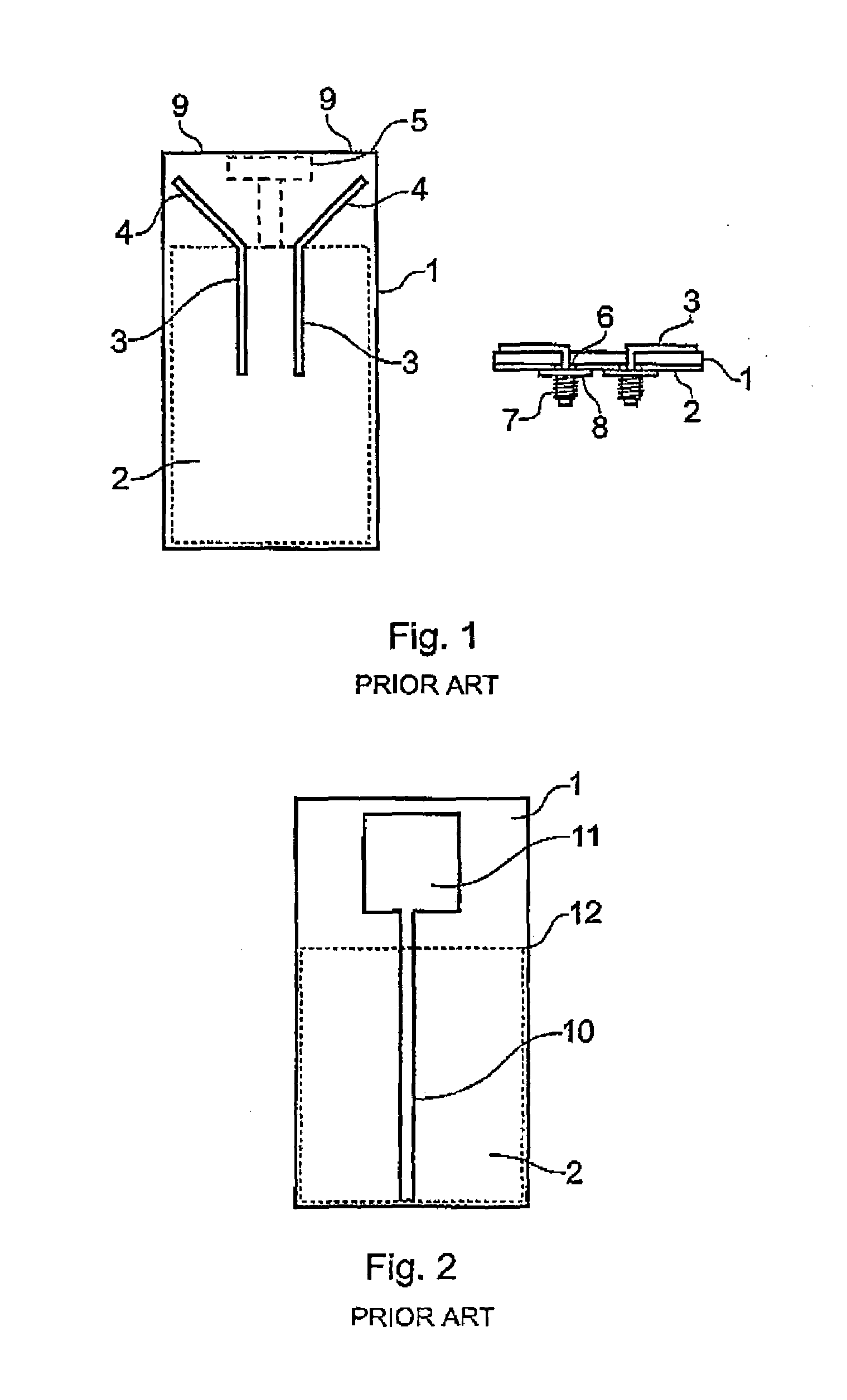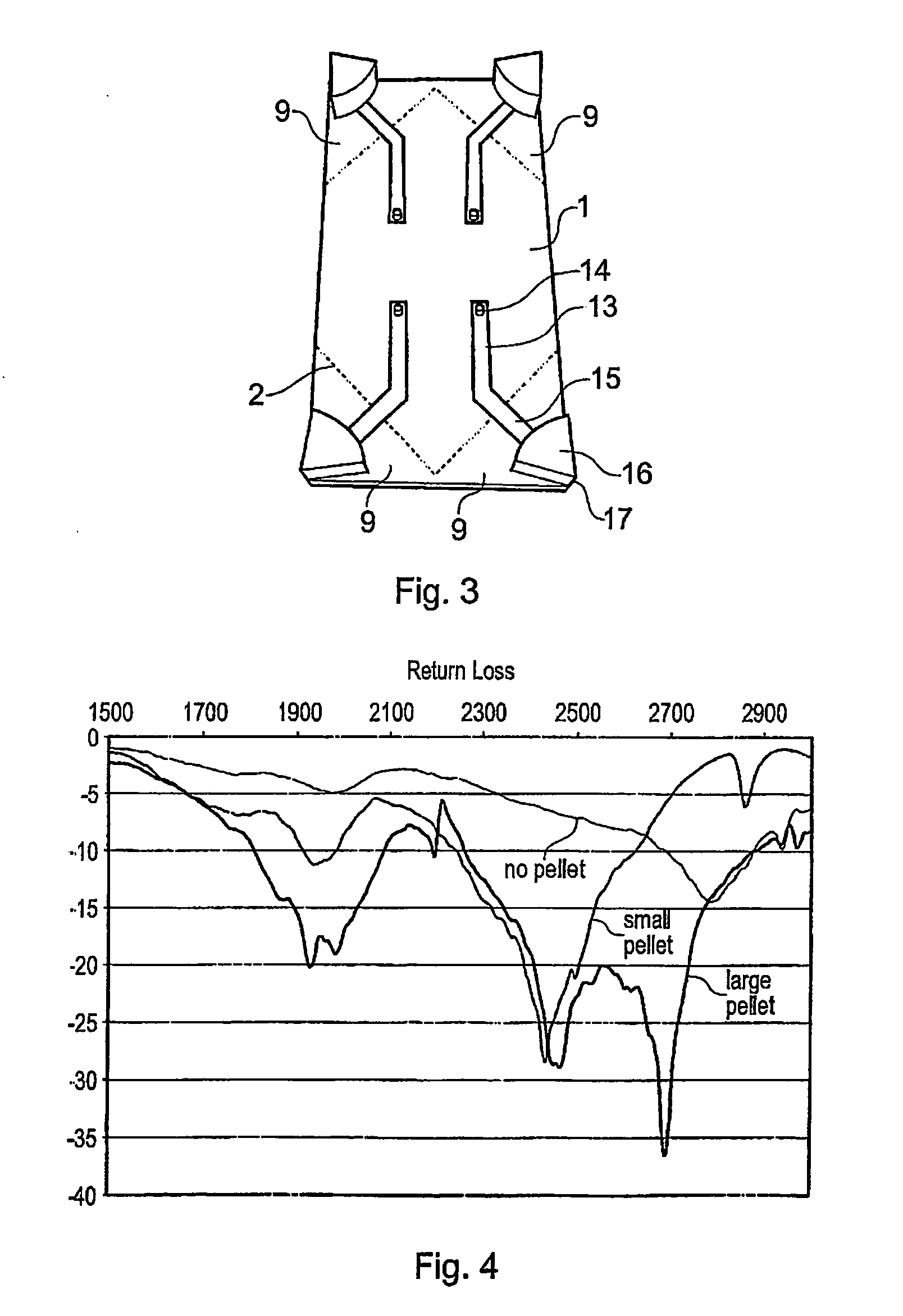Multiple antenna diversity on mobile telephone handsets, PDAs and other electrically small radio platforms
- Summary
- Abstract
- Description
- Claims
- Application Information
AI Technical Summary
Benefits of technology
Problems solved by technology
Method used
Image
Examples
Embodiment Construction
[0048]FIG. 1 shows a prior art printed microstrip dual monopole antenna device, including a dielectric substrate 1 in the form of an FR4 PCB, a main conductive groundplane 2 on the underside of the substrate 1, two printed microstrip lines 3 on the upper side of the substrate 1, the lines 3 terminating in two radiating sections 4, and a small ‘T’-shaped section of groundplane 5 on the underside of the substrate 1 in a location between the two radiating points 4.
[0049]FIG. 1 also shows the device in cross-section, where it can be seen how the two microstrip lines 3 pass from the upper side of the substrate 1 to its lower side through a pair of gaps or holes 6 in the groundplane 2, and terminate in a pair of SMA connectors 7 which are electrically isolated from the groundplane 2 by insulating washers 8.
[0050]The two microstrip lines 3 are configured such that the radiating sections 4 point towards corners 9 of the substrate 1 and air disposed at 90 degrees to each other. No groundplan...
PUM
 Login to View More
Login to View More Abstract
Description
Claims
Application Information
 Login to View More
Login to View More - R&D
- Intellectual Property
- Life Sciences
- Materials
- Tech Scout
- Unparalleled Data Quality
- Higher Quality Content
- 60% Fewer Hallucinations
Browse by: Latest US Patents, China's latest patents, Technical Efficacy Thesaurus, Application Domain, Technology Topic, Popular Technical Reports.
© 2025 PatSnap. All rights reserved.Legal|Privacy policy|Modern Slavery Act Transparency Statement|Sitemap|About US| Contact US: help@patsnap.com



